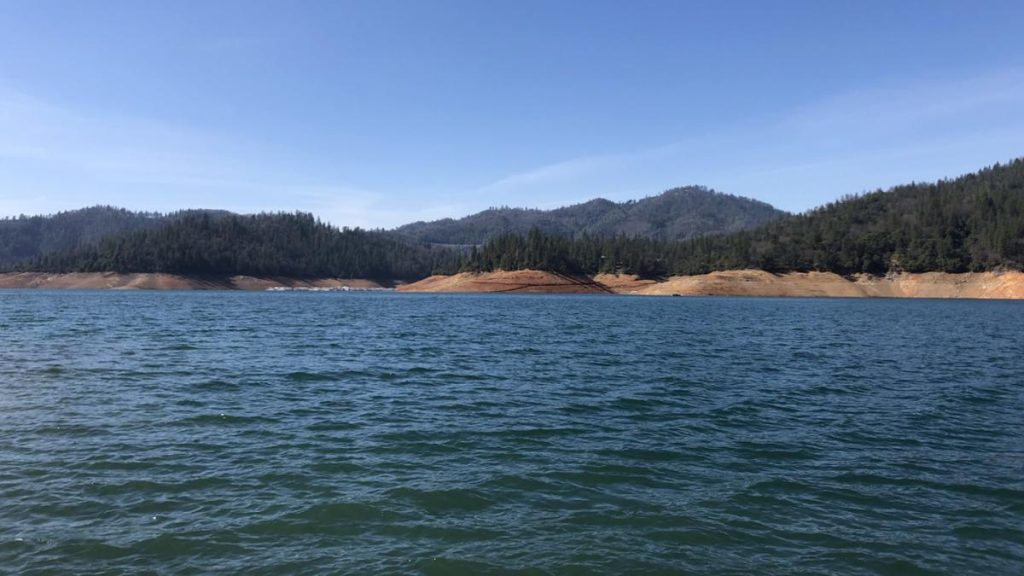California’s largest reservoir, Lake Shasta, is expected to reach its maximum capacity this year, after experiencing historically low water levels for several years. The lake rose 12 feet from March 1-26 and needs another 17 feet to reach its limit. As of March 27, the lake was 90% full and 115% of the average for this time of year. The U.S. Bureau of Reclamation has been limiting water released from the Shasta Dam to allow the lake to fill, reducing the release rate from 14,000 cubic feet per second to 3,569 cubic feet per second as more water flowed in. Officials are optimistic that the lake will be full by the end of April.
Lake Shasta is a crucial freshwater source for California, sending water as far south as Bakersfield for drinking, irrigation, and wildlife habitat through the Central Valley Water Project. In late 2021, the lake was only 24% full and 175 feet from the top of the dam. However, recent atmospheric rivers have brought much-needed rainfall to the region, reviving bodies of water like Lake Shasta and Lake Tulare. The full Lake Shasta will not only benefit the entire state but also boost the local economy, potentially leading to the most profitable summer season since before the COVID-19 pandemic.
Matt Doyle, general manager of Lake Shasta Caverns, expressed optimism about the upcoming summer season, noting that last year with a full lake level was fantastic for businesses. With lake levels rising and COVID-19 restrictions easing, businesses are anticipating a successful season ahead. The positive outlook is further reinforced by the fact that Lake Shasta is expected to reach its maximum capacity this year, providing ample water for various uses and activities in the region.
The rise in water levels at Lake Shasta is a result of an increase in rainfall, particularly from atmospheric rivers that have inundated the region. The lake’s narrow base and wider top make it challenging to completely fill, but the recent reduction in water release from the Shasta Dam has allowed the lake to fill at a steady pace. Officials are closely monitoring the situation and are hopeful that the lake will be topped off by the end of April, setting the stage for a bountiful summer season and economic recovery in the region.
Overall, the expected full capacity of Lake Shasta this year is a positive development for California’s water supply and local economy. As one of the state’s most crucial freshwater sources, the lake plays a vital role in providing water for various purposes across the region. With the lake expected to reach its limit after several years of low water levels, businesses and residents are looking forward to a prosperous summer season and economic recovery following the challenges of the past year. The rising water levels at Lake Shasta reflect the impact of recent rainfall and the importance of managing water resources effectively to meet the needs of communities and ecosystems in the region.


